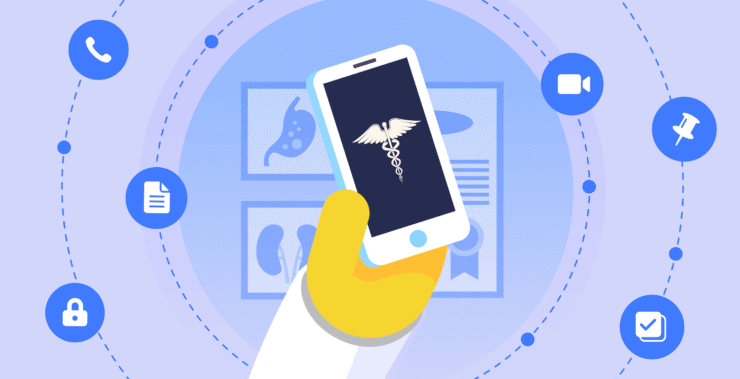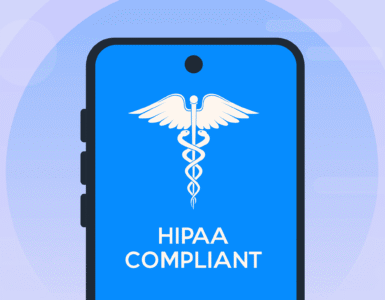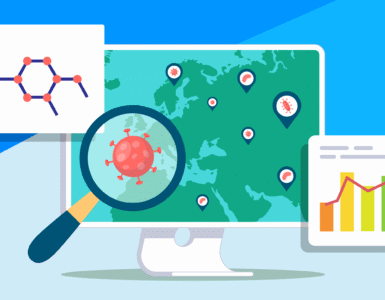In healthcare and life sciences, communication is more than coordination – it is the foundation of patient safety and effective care. Every moment counts. A single delay, a missed update, or an overlooked message can have serious consequences. Research by CRICO Strategies, which analyzed 23,000 malpractice lawsuits, found that more than 7,000 were linked to communication failures. These failures resulted in nearly 2,000 preventable deaths and $1.7 billion in costs.
Yet, despite the stakes, many hospitals, clinics, and research facilities continue to depend on outdated systems, like pagers, email chains, or unsecured messaging apps. These tools fall short in providing real-time collaboration, secure data exchange, and compliance with healthcare regulations. Modern clinical communication platforms are designed to address these gaps by enabling faster decisions, protecting patient privacy, and supporting seamless collaboration across departments and locations.
It’s not only about patients. Clear, secure communication between professionals is equally critical. Doctors, nurses, researchers, and administrators need instant access to updates, lab results, and treatment plans. Without the right channels, information gets delayed, duplicated, or overlooked. Effective communication tools help healthcare teams reduce errors, improve workflows, and ensure that critical knowledge is shared at the right time.
Chanty has been working with clinics and healthcare teams to respond to these exact challenges. We know that secure, practical tools are essential in environments where every second matters. Our platform offers healthcare professionals a reliable way to stay connected, streamline discussions, and focus on what matters most – patient care.
In this article, we’ll explore what clinical communication really means, who is involved, and why ordinary tools are no longer enough. We’ll review essential standards such as HIPAA and highlight technologies shaping how care teams collaborate today, including platforms like Chanty that are built to keep pace without compromising care.
Let’s begin at the core: why getting clinical comms right matters now more than ever.
Part 1: Understanding clinical communication
What is clinical communication?
Clinical communication is defined as a structured way to ensure timely, accurate, and respectful exchange of information between patients, their carers, healthcare providers, and members of health-professional teams.
Every minute, clinicians coordinate: a surgeon consults an anesthesiologist, a nurse hands off during shift change, or a pharmacist confirms a dosage. These interactions turn individual actions into one treatment plan.
Unlike casual workplace talk, clinical communication carries life-or-death consequences. A delay, missed symptom, or unclear message can ripple across departments. Precision and timing are critical.
It’s not a “soft skill” but a professional competency – one shaped by strict privacy rules like HIPAA, heavy technical language, and constant pressure. It also extends to doctor–patient conversations, where clarity and empathy drive consent, trust, and better outcomes.
When communication fails, patients are at risk. That’s why hospitals are adopting secure clinical communication platforms – from large enterprise systems to agile tools like Chanty, which combines secure messaging, task management, and real-time coordination.
So, what makes a system effective? And how can healthcare teams ensure their communication tools truly support patient safety and efficiency?
Key principles of clinical communication
The pace of healthcare is relentless. In the rush of handovers, consultations, and cross-department updates, clinical communication must function as an integral part of daily operations.
To be effective, it must be guided by a few core principles:
- Clarity – Every message should be sharp, direct, and actionable. Misunderstandings can lead to errors; clarity prevents them.
- Speed with precision – Information must flow in real time but never at the cost of accuracy. The right person needs the right message at the right moment.
- Contextual relevance – Communication must be tailored to its audience. A nurse’s needs differ from those of a surgeon or pharmacist. Messages should be aligned with task, role, and urgency.
- Security – Patient data must be protected at all times. HIPAA compliance is not a box to tick – it’s a foundation of trust.
- Empathy and professionalism – Even under pressure, communication must remain professional and compassionate. Precision matters, but so does tone.
Specialized clinical communication software helps teams follow these principles by providing secure, reliable alternatives to standard messaging or phone calls.
What clinical communication requires from providers and patients – and the role of HIPAA
Knowing what makes clinical comms effective is only part of the story. The deeper question is: What does it ask of the people involved?
For healthcare professionals, it’s not enough to be fast and clear. Every interaction also requires presence – balancing urgency with empathy, and precision with emotional awareness. Good clinical communication means listening actively, explaining treatments in plain language, clarifying consequences of medical decisions, and checking the patient’s perspective. Non-verbal cues matter too: posture, eye contact, or a simple nod can make a difference. Building trust, exchanging information mutually, supporting shared decision-making, and navigating uncertainty are all part of the daily routine .
Patients, too, play an active role. They bring fear, confusion, questions – and a fundamental right to understand what’s happening. Clinical communication should serve as a bridge, connecting patients to their care teams with transparency, inclusion, and dignity.
Holding it all together is HIPAA – the invisible framework that ensures communication stays ethical, legal, and secure. More than paperwork, it defines how information is shared, stored, and protected. For providers, that means every message, system, and tool must follow strict data privacy rules. And in today’s digital world, it’s no longer just about compliance – it’s about fostering a culture where privacy, safety, and clarity coexist in every interaction. Choosing platforms with strong clinical communication features ensures that these standards are met consistently, from secure messaging to audit trails and controlled access.
Part 2: Clinical communication software and collaboration platforms
So far, we’ve explored the critical nature of clinical communication, its intricate demands, and how integral it is to healthcare. It’s clear that this is no longer a function that can be managed with fragmented tools or left to chance.
While traditional methods like post-its and phone calls were once enough, modern healthcare moves at a much faster pace. Teams now collaborate across departments and even across campuses. Patients often need coordinated care from several professionals, which makes time and clarity essential.
So, what is clinical communication software?
Clinical communication software is a digital system designed to facilitate secure and efficient information exchange among healthcare professionals. It acts as a central hub where teams can share messages, alerts, updates, and patient details in real time. Instead of juggling calls, texts, and notes, doctors, nurses, and specialists can communicate quickly and safely. Many platforms connect with hospital systems, allowing lab results or patient status updates to reach the right people without delay. For example, a critical lab result can be delivered instantly to the on-call doctor, helping teams respond faster and prevent errors.
Clinical communication platforms were created not simply to add new technology, but because healthcare’s growing complexity requires smarter coordination. They go beyond hallway updates and casual texts, offering a secure, reliable, and flexible way for care teams to work together.
Over time, these tools evolved from simple pagers to secure messaging and now into fully integrated collaboration systems. Today, they streamline everything from lab results and prescriptions to patient updates and specialist consultations, all shared instantly with the right stakeholders.
For clinicians, this shift is about more than convenience. It improves safety, efficiency, and ensures that no critical moment is missed. For patients, it builds confidence, knowing their care team is connected, informed, and responsive.
The best clinical communication software
In the fast-paced world of healthcare, where timely, accurate information exchange is vital, clinical communication platforms have become indispensable. These tools go beyond simple messaging to create an integrated communication ecosystem that supports the complex workflows of healthcare professionals.
| Feature | Chanty | TigerConnect | symplr (Halo Health) | Connecteam | OnPage | Buzz Messenger | Microsoft Dragon Copilot |
|---|---|---|---|---|---|---|---|
| HIPAA & GDPR Compliance | Full compliance | Full compliance | Full compliance | Full compliance | Full compliance | Full compliance | Full compliance |
| Secure Messaging & Encryption | End-to-end encryption | Secure messaging | Secure messaging | Secure messaging | Secure messaging | Secure messaging | Secure messaging |
| Real-Time Instant Messaging | Fast and intuitive chat | Robust messaging | Messaging + alerts | Mobile messaging | Critical alerting | Messaging | Messaging + AI features |
| Task & Workflow Management | Built-in Kanban-style boards | Task management | Task and scheduling features | Task checklists | ❌ | Basic task features | Task & documentation |
| Mobile & Desktop Apps | Fully optimized and mobile-friendly | Fully optimized | Fully optimized | Mobile-focused | Mobile & desktop | Mobile-friendly | Desktop & mobile |
| Ease of Use & Onboarding | Intuitive, minimal training | Medium complexity | Medium to high complexity | Medium complexity | Medium complexity | Easy to use | Medium complexity |
| Integration with EHR Systems | Custom integration via API possible | Native EHR integration | Native EHR integration | Limited | Limited | Limited | Native EHR integration |
| Advanced Security Features | IP Allowlist, 2FA, DLP | Basic to advanced features | Advanced compliance features | Basic compliance | Escalation & confirmations | Basic compliance | Advanced AI security features |
| Collaboration Features | Chat, video calls, polls, announcements | Messaging + alerts | Messaging + scheduling | Messaging + checklists | Critical alerting | Messaging + voice/video | Messaging + AI documentation |
| Focus / Best Fit | Interdisciplinary teams needing secure, simple communication | Large hospitals with enterprise needs | Acute care hospitals with complex workflows | Mobile frontline workers | Rapid incident response teams | Small to mid-sized clinics | Providers needing AI-powered documentation |
Connecteam

Ideal for: Nurses, home health aides, and multi-site support teams.
Connecteam is designed with frontline healthcare workers in mind. It centralizes essential communication with HIPAA-compliant messaging, customizable forms, and digital checklists – perfect for mobile staff who need instant updates on the go. Supervisors can assign and track tasks, ensuring accountability without chasing paperwork. It’s especially useful in settings like long-term care facilities, home health services, or large clinics where not everyone is desk-based.
- Why it fits: Empowers mobile teams to stay connected, organized, and compliant – even when they’re on different floors, shifts, or sites.
TigerConnect
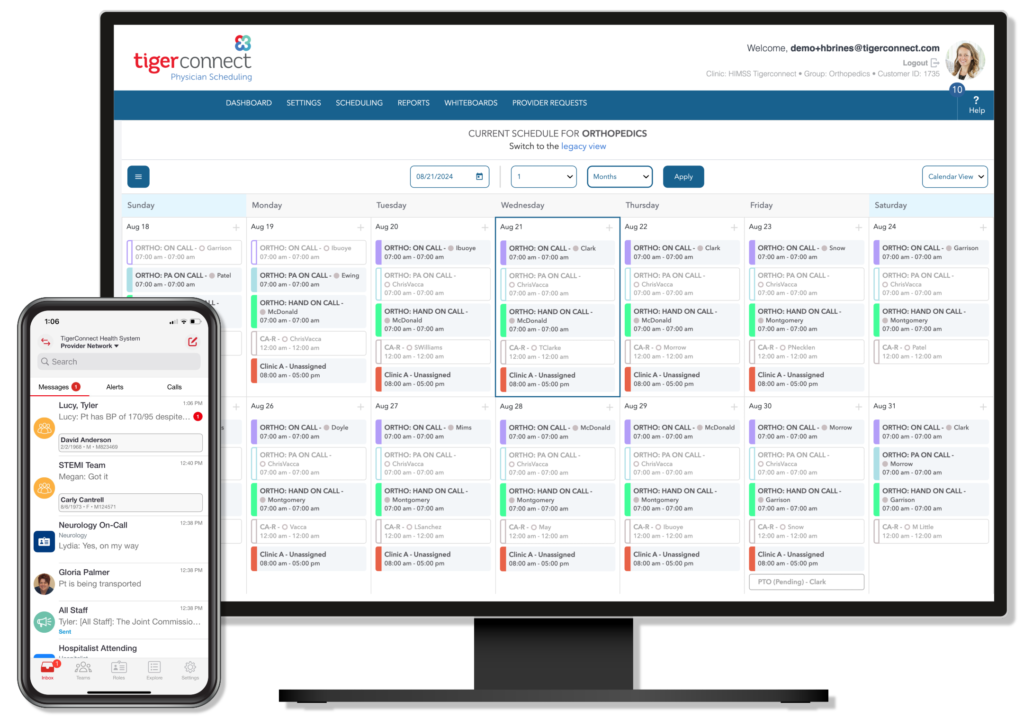
Ideal for: Physicians, hospitalists, specialists, and care coordination teams.
TigerConnect enables seamless communication across departments and roles. Its integration with EHR systems allows clinicians to send patient updates or lab results in real time. Nurses can alert physicians without relying on pagers, while administrators benefit from advanced analytics on communication flow.
- Why it fits: Reduces communication lag in hospitals and emergency settings, improving care transitions and response time – a must-have for large institutions or those managing critical care.
symplr

Ideal for: Charge nurses, care coordinators, and on-call scheduling teams.
Built specifically for acute care environments, symplr handles the intricate coordination required in hospitals. It simplifies complex on-call scheduling, letting teams know who’s available instantly – no need to flip through paper charts or chase down colleagues. Its secure chat and alert features also help reduce care fragmentation.
- Why it fits: Streamlines care team communication and shift coordination, helping ensure no patient or task falls through the cracks in high-pressure settings.
OnPage
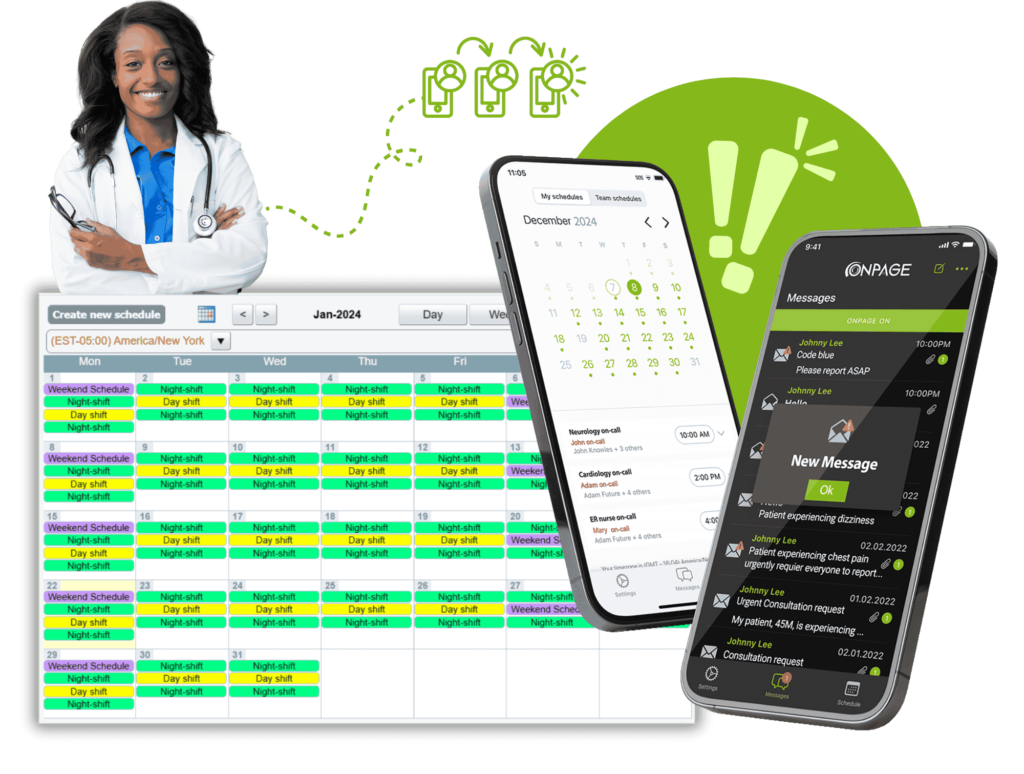
Ideal for: Rapid response teams, IT incident managers, and clinical leadership.
OnPage is more than just secure messaging – it’s built for critical communications. With built-in escalation rules and delivery confirmations, it ensures alerts are never missed. For example, a nurse can trigger an urgent cardiac alert that will escalate to the next available provider if there’s no response.
- Why it fits: Perfect for high-risk workflows, like critical care or behavioral health, where timing is everything and accountability needs to be traceable.
Buzz Medical Messenger by Skyscape
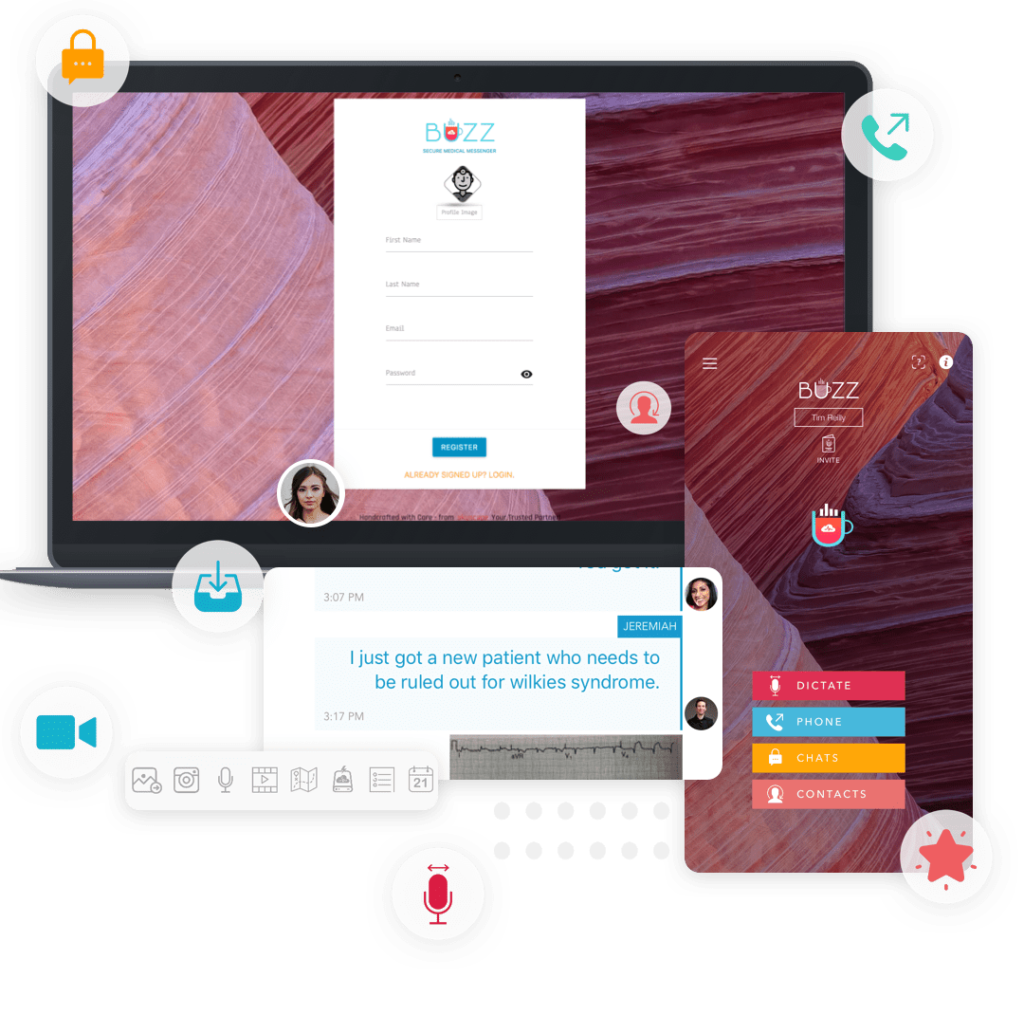
Ideal for: Private practices, outpatient teams, and telehealth providers.
Buzz is lightweight, intuitive, and easy to deploy. It combines HIPAA-compliant texting, group messaging, and even voice and video options. Small clinics or specialty providers can use it to stay in sync without overwhelming staff with overly complex systems.
Microsoft Dragon Copilot

Ideal for: Physicians, nurse practitioners, and administrative staff.
Dragon Copilot brings AI into the daily routine of clinical documentation. With voice recognition and ambient listening, it captures conversations and auto-generates progress notes, freeing clinicians from typing or dictating notes later. It integrates with EHRs, helping reduce burnout while maintaining compliance.
- Why it fits: Transforms how providers interact with records and documentation – saving time, reducing errors, and allowing more focus on patients.
Why Chanty could be the perfect option for clinical teams
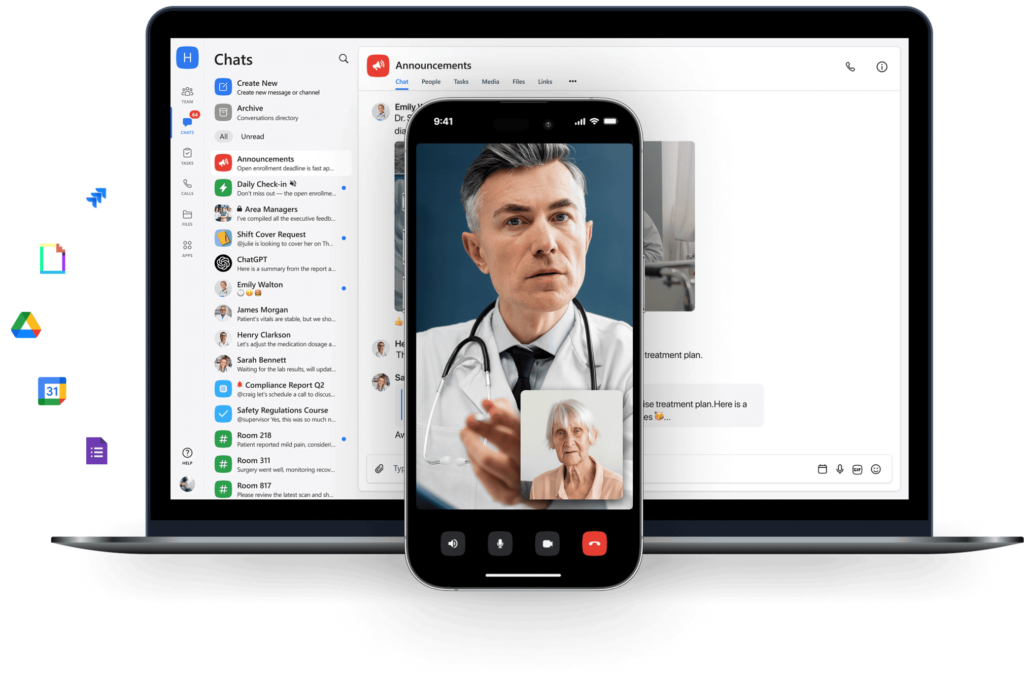
In healthcare, every second counts and clear communication can mean the difference between life and death. That’s why Chanty is designed to support clinical teams with a secure, reliable, and simple way to communicate – removing the noise, delays, and frustration that often get in the way of patient care.
We deeply understand the challenges medical professionals face: managing complex workflows, safeguarding sensitive patient data, coordinating across multiple departments and locations, and juggling clinical responsibilities alongside administrative tasks. Chanty helps reduce these burdens by delivering real-time communication that keeps your entire care team aligned and focused on what matters most – the patients.
Security that meets medical standards
Patient privacy isn’t just a requirement – it’s a commitment. Chanty is fully HIPAA and GDPR compliant, with advanced features like IP Allowlist on our Business Plan, ensuring only authorized networks can access your workspace. One-to-one messages remain strictly private, giving your team peace of mind that sensitive information stays protected at all times.
Communication structured without clutter
Chanty lets you control who sees what with customizable permissions by role or department. This means your team gets only the information they need, minimizing distractions. Need to quickly share a change in shift schedules or updated protocols? Use company-wide announcements that cut through the noise and ensure everyone stays informed.
Always accessible, wherever you yre
Whether you’re rushing through hospital corridors, consulting remotely, or balancing patient care with paperwork, Chanty is available on desktop and mobile – so your team stays connected anytime, anywhere, across shifts and locations.
Flexible to fit your existing tools and workflows
We know your clinical environment likely already uses specialized software and tools. If Chanty doesn’t yet support your required integrations out of the box, our team works closely with you to tailor and connect Chanty to your systems – often within days or weeks. Because software should work for your people, not the other way around.
Real clinical teams are already seeing results:
- Up to 40% faster response times
- 3+ hours saved weekly per staff member by cutting administrative delays
- 50% fewer unnecessary phone calls
Ready to see how Chanty fits your team’s daily routine?
Book a no-pressure demo today – let’s explore how Chanty can simplify communication and help your clinical staff focus on what really matters.
With pricing starting at just $3 per user, Chanty offers an affordable, secure, and easy-to-use platform designed specifically to meet the demands of healthcare teams.
Wrapping up
In the ever-evolving world of healthcare and life sciences, clinical communication is no longer just a support system – it’s a living, breathing part of patient care. From understanding what clinical comms truly is, to navigating the principles it stands on, and finally choosing the right tools to sustain it, we’ve traveled through the very heart of how modern care teams stay connected.
What becomes clear is this: technology may carry the message, but it’s the people who shape the meaning. Clinical communication software and collaboration platforms are here to serve, not complicate, the essential work being done every hour of every day. But using them responsibly is not optional. With the sensitivity of patient data and the high stakes of clinical decisions, the tools we choose must be paired with a deep understanding of how to use them safely.
So, a few ground rules worth keeping close:
- Only use HIPAA-compliant platforms when handling patient information. This is your legal and ethical shield.
- Be cautious with permissions. Not everyone needs to see everything. Tailored visibility keeps information precise and secure.
- Avoid personal devices or unsecured apps for professional communication, unless you’re sure they meet the standards.
- Educate your team – clinical communication is only as strong as its weakest link.
- Regular audits and reminders help keep good habits fresh and reduce risk over time.
When communication technology is used thoughtfully, it becomes a trusted partner – helping your team respond faster, coordinate better, and ultimately deliver safer, higher-quality care.
Chanty was built with this in mind. It’s simple, secure, and designed to move at healthcare’s pace. It connects your team without noise or hassle and keeps data safe along the way.
If you want to see how Chanty can fit smoothly into your clinical workflow, book a demo. Because clearer communication means better care, and better care is what really counts.



